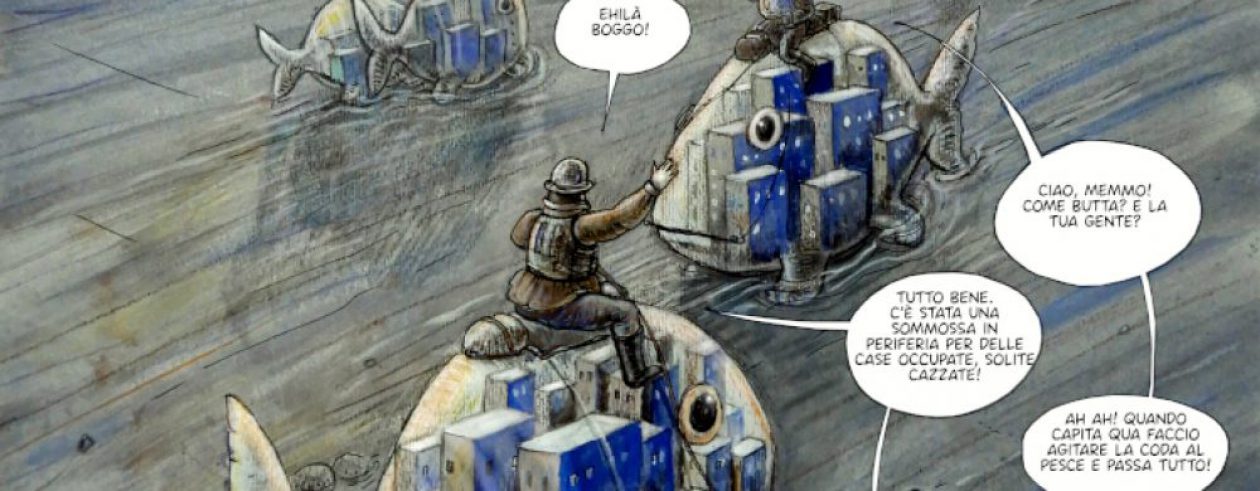The great swiss artist Paul Klee made one of his most famous artwork, the “Angelus Novus“, in 1920, using the oil transfer method he invented (a kind of monoprint). This amazing image owes part of its importance and fame to the words of german philosopher Walter Benjamin, who bought the monoprint and kept it until he was obliged to leave Germany in 1940, due to Nazis persecution.
Here’s how Benjamin read Klee’s artwork in 1940:
“A Klee painting named Angelus Novus shows an angel looking as though he is about to move away from something he is fixedly contemplating. His eyes are staring, his mouth is open, his wings are spread. This is how one pictures the angel of history. His face is turned toward the past. Where we perceive a chain of events, he sees one single catastrophe which keeps piling wreckage upon wreckage and hurls it in front of his feet. The angel would like to stay, awaken the dead, and make whole what has been smashed. But a storm is blowing from Paradise; it has got caught in his wings with such violence that the angel can no longer close them. The storm irresistibly propels him into the future to which his back is turned, while the pile of debris before him grows skyward. This storm is what we call progress.“[1]
I made a portrait of Paul Klee 3 years ago. It is the drawing below. I would put the “Angelus novus” inside it for the strong meaning it has in the current legacy of Klee’s work. The whole production of this great artist has had a great deal of influence in art, even today.


[1] W. Benjamin, “Theses on the Philosophy of History”, 1940
